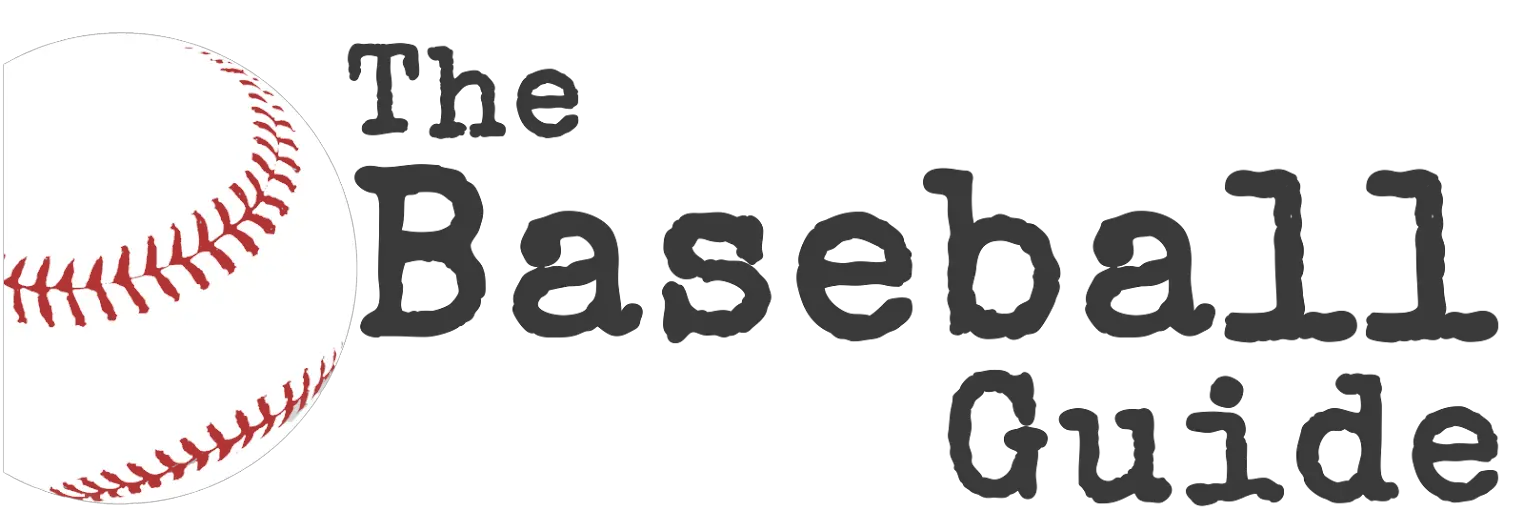Baseball and soccer cleats can be very similar in many ways, especially in terms of appearance. This is why people get confused between these two types of cleats.
They want to know what the differences are, why two different shoes are needed for a specific sport, and whether it’s possible to use one type over the other based on the player’s needs.
Let’s answer all these questions with the following article below.
Can You Wear Soccer Cleats for Baseball?
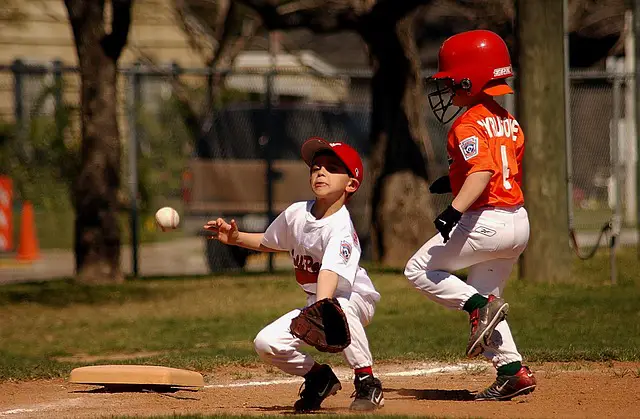
Yes, you can wear soccer cleats in baseball little leagues and for fun games. But, if you are a serious player who wants to play baseball professionally, then you should not wear soccer cleats in a baseball game.
The soccer cleats and baseball cleats are very similar, but they are slightly different.
This small difference may not be visible in a fun game, but in a competitive baseball game, this difference can affect your performance.
Therefore, I recommend that you should not wear soccer cleats in your big baseball game. Instead, choose the best baseball cleats that you can find. It’ll really help you.
Can You Wear Baseball Cleats for Soccer?
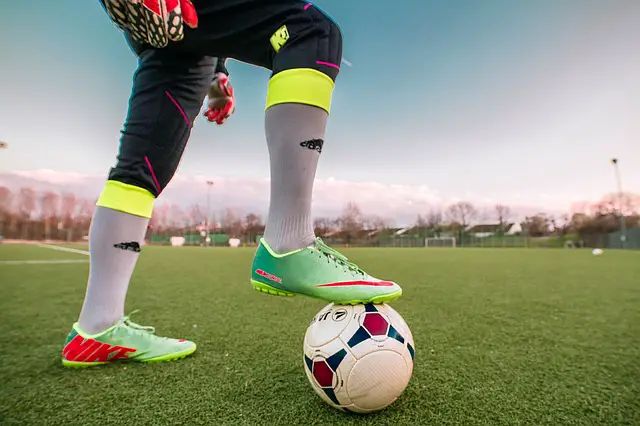
No. You can’t wear baseball cleats in soccer. Because in the baseball cleats, you’ll find an extra toe stud, and this can be dangerous during soccer tackles.
Therefore, in some youth soccer leagues, referees check the cleat pattern of the players before the game, and they don’t allow the players to play soccer wearing baseball cleats.
Difference Between Soccer and Baseball Cleats
In short, soccer cleats provide less ankle support, and they’re more lightweight as compared to baseball cleats. Another big difference is the extra toe stud that you find in the baseball cleats. So, let’s read further to learn about the differences between soccer and baseball cleats.
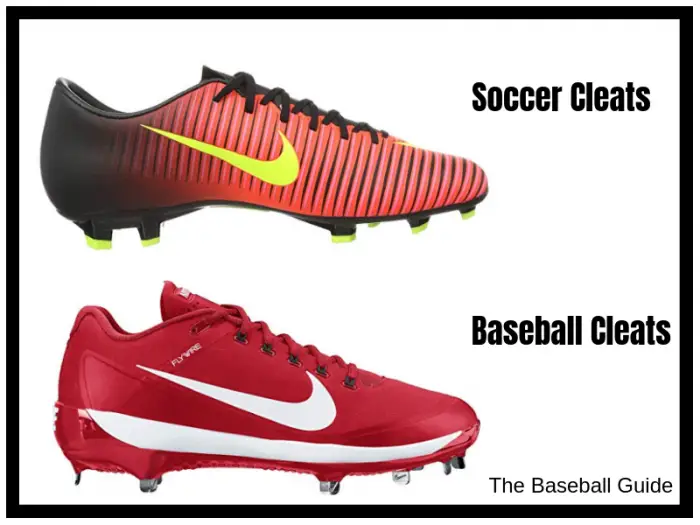
Weight of Cleats
The soccer cleats are lightweight as compared to the baseball cleats.
In soccer, players need to be very quick, and they also have to do a lot of footwork as compared to baseball. Therefore, the soccer cleats are more lightweight & supple to help them in their game.
Front Area of the Cleats
If you take a look at the soccer cleats, you’ll notice that the front area is much more rounded.
This is the strike zone of the cleats, therefore, this needs to be more rounded so that soccer players can easily give the desired direction to the ball.
While, in the baseball cleats, there is a rubber toe guard in the front area. The baseball players like pitchers and catchers put a lot of pressure on the front part, therefore, you’ll get a toe guard to add durability to the cleats.
Ankle Support
Almost always, you will see that soccer players wear only low-top soccer cleats.
The mid-top or high-top cleats provide ankle support, but they also add extra weight to your feet. As speed is most important in soccer, therefore, soccer cleats come in low cut.
In baseball cleats, you can easily find low-top, mid-top, or high-top cleats that provide sufficient ankle support to your feet.
In baseball, players do not have to keep running all the time. But, they have to frequently run and slide to catch the balls.
The midsole of Baseball & Soccer Cleats
In soccer cleats, there is very little to no midsole.
Therefore, soccer cleats are not very comfortable to wear as compared to baseball cleats.
The baseball cleats have cushioned midsole that provides comfort to the feet.
Extra Toe Stud
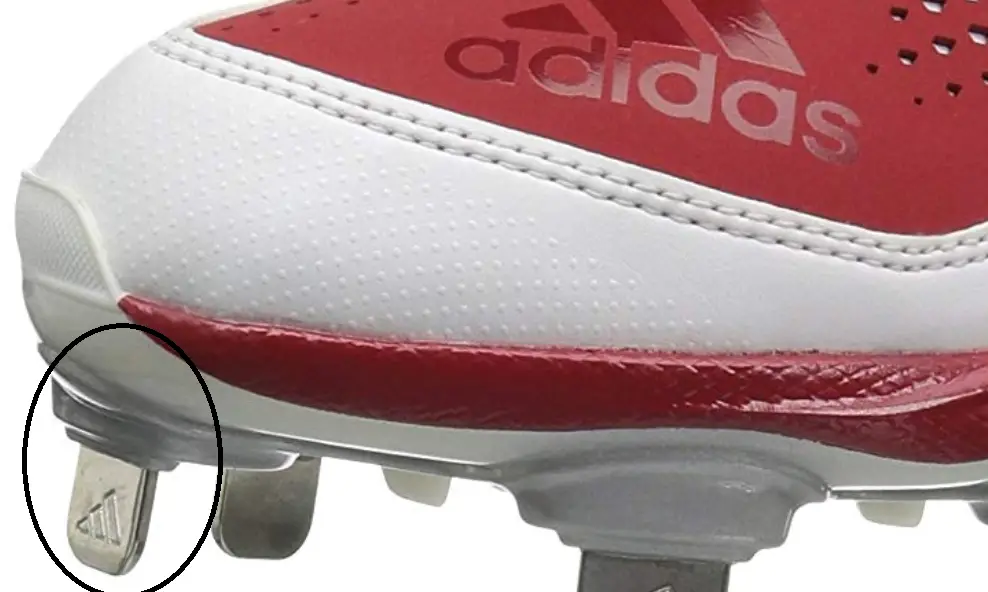
The biggest difference is the extra toe stud that you’ll find in the baseball cleats. This toe cleat allows the player to dig easily into the ground and take it off.
If you want to modify a baseball cleat to a soccer cleat, then you can cut off the front toe stud, and transform it.
Spikes
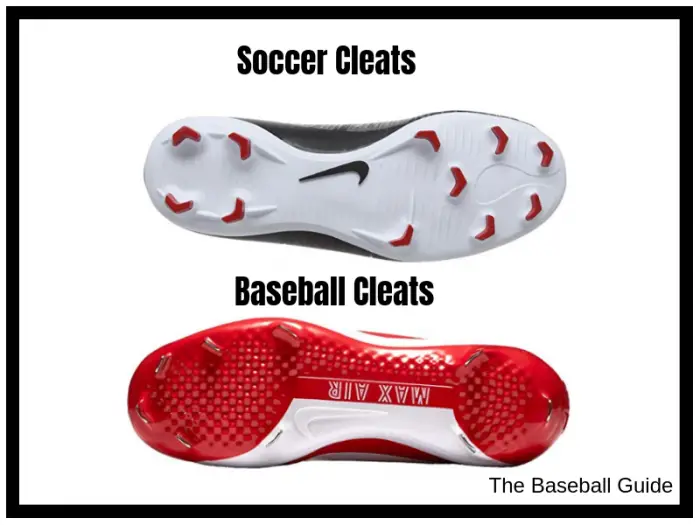
Baseball shoes come in different options. Like, there are three different types of shoes you can find.
These include molded cleats, metal cleats, and turf shoes depending on the field. You can find more information about molded cleats in this article.
While mostly you’ll find soccer cleats with rubber studs.
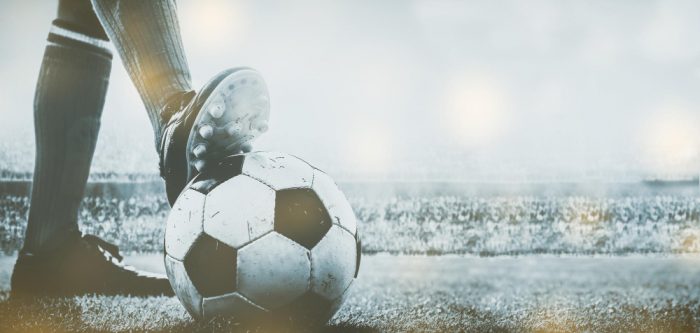
FAQs on Soccer cleats vs Baseball cleats
-
Can soccer cleats be worn for baseball?
Yes, you can wear soccer cleats for baseball games at a casual level, but for professional baseball games, it is not recommended to wear soccer cleats.
-
Can baseball cleats be worn for soccer?
No, you cannot wear baseball cleats for soccer because they have an extra toe stud that can be dangerous during soccer tackles.
-
What are the differences between soccer and baseball cleats?
Soccer cleats are more lightweight, have a more rounded front area, provide less ankle support, and have little to no midsole. Baseball cleats are heavier, have a rubber toe guard in the front area, provide ankle support, have a cushioned midsole, and have an extra toe stud.
-
Why do soccer cleats have less ankle support than baseball cleats?
Soccer players need to be quick and do a lot of footwork, so lightweight, low-cut cleats are preferred for better mobility.
-
What types of cleats are recommended for professional baseball players?
Professional baseball players should use the best baseball cleats available, as they provide the necessary support and features for optimal performance on the field.
-
What is the extra toe stud on baseball cleats used for?
The extra toe stud on baseball cleats is designed to provide extra grip and stability when pitching, batting, or making quick movements on the field. It allows the player to dig easily into the ground and take off without slipping. However, this extra toe stud can be dangerous when playing soccer, which is why it is not recommended to wear baseball cleats for soccer.
The Verdict
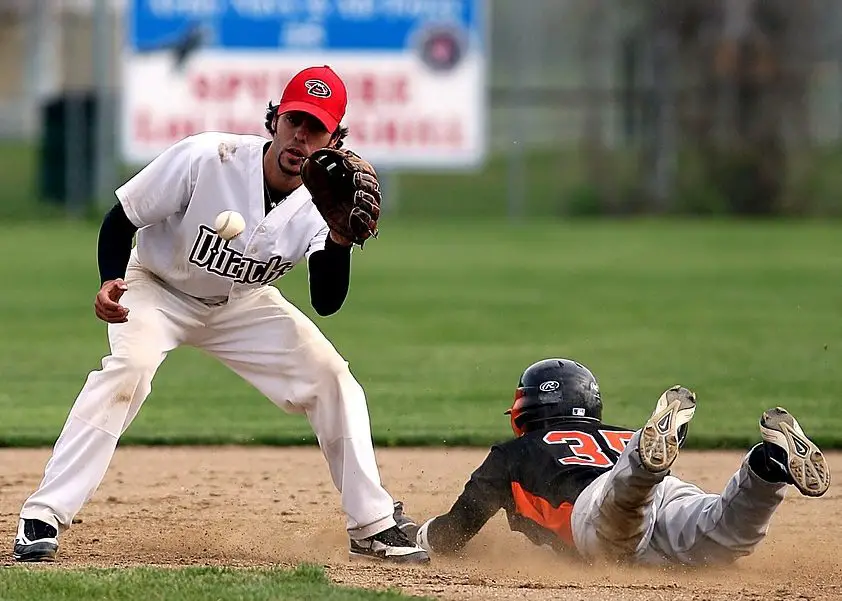
The baseball and soccer cleats are very much similar to each other but do not use baseball cleats for soccer.
While you can use soccer cleats in baseball games.
If you are just playing for fun or just checking which sport is good for you, then it can be a good idea to wear this cleat. In that case, buy soccer cleats.
But, if you are playing professionally or hoping to play professionally in the future, then stick with one type of cleat. Whichever cleats you’re using, make sure you know how to properly clean your cleats.
Let me know if you have any questions.
